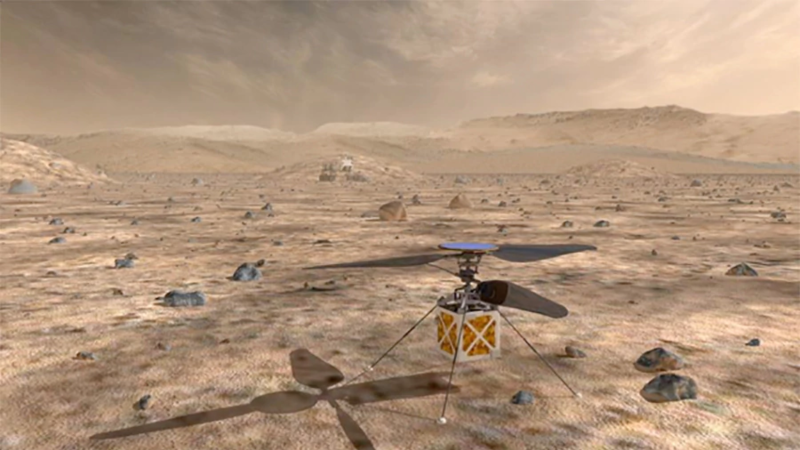

NASA’s Jet Propulsion Lab (JPL) is to send a small autonomous helicopter to Mars as part of the agency's 2020 Mars Rover mission. It is hoped that the rotorcraft will demonstrate the advantages and feasibility of a heavier-than-air craft on Mars. If the concept is proven, helicopters could have a role in future manned Mars missions as scouts, able to reach and survey nearby places quickly and easily before relaying data back to the team on the ground.
“NASA has a proud history of firsts,” said NASA Administrator Jim Bridenstine. “The idea of a helicopter flying the skies of another planet is thrilling. The Mars Helicopter holds much promise for our future science, discovery, and exploration missions to Mars.”
The programme first started in the JPL in 2013 which was tasked with designing a rotorcraft that could work in the Red Planet’s atmosphere. Given that the atmosphere on Mars is only one percent of that on Earth, the vehicle needed to be as light as possible whilst maintaining sufficient strength.
“The altitude record for a helicopter flying here on Earth is about 40,000 feet. The atmosphere of Mars is only one percent that of Earth, so when our helicopter is on the Martian surface, it’s already at the Earth equivalent of 100,000 feet up,” said Mimi Aung, Mars Helicopter project manager at JPL. “To make it fly at that low atmospheric density, we had to scrutinize everything, make it as light as possible while being as strong and as powerful as it can possibly be.”
The final design tips the scales at just 1.8kg and is equipped with solar cells to charge lithium ion batteries, a heater to survive harsh, cold Martian nights, and a fuselage that is roughly the size of a softball. In this small package comes some impressive engineering - the craft has two counter-rotating blades that will spin at nearly 3000 rpm to ensure purchase in the thin atmosphere of Mars.
In order to deploy the helicopter, the rover will identify a suitable location before driving away from the vehicle to a safe distance from which to relay commands. The helicopter will top up its batteries and run tests before receiving commands from Earth-based controllers that will push it into autonomous mode, allowing it fly the mission on its own.
“We don’t have a pilot and Earth will be several light minutes away, so there is no way to joystick this mission in real time,” said Aung. “Instead, we have an autonomous capability that will be able to receive and interpret commands from the ground, and then fly the mission on its own.”
In order to reach Mars, the craft will be attached to the belly pan of the Mars 2020 rover.
